BJP: Grant, you were Primal Scream’s photographer for many years. How hard was it to photograph them without getting too close, or is that an inevitable part of spending that much time with them?
Grant Fleming: I’ve always taken pictures on instinct. I had no training, I fell into things. If I’ve felt strongly about it gone and done it. You try not to be biased when you’re doing important pictures, but you’re only there because you feel strongly about the situation. I’ve always loved the band, so I have this very strong cut off, I don’t get in people’s faces and take those sort of x-rated pictures.
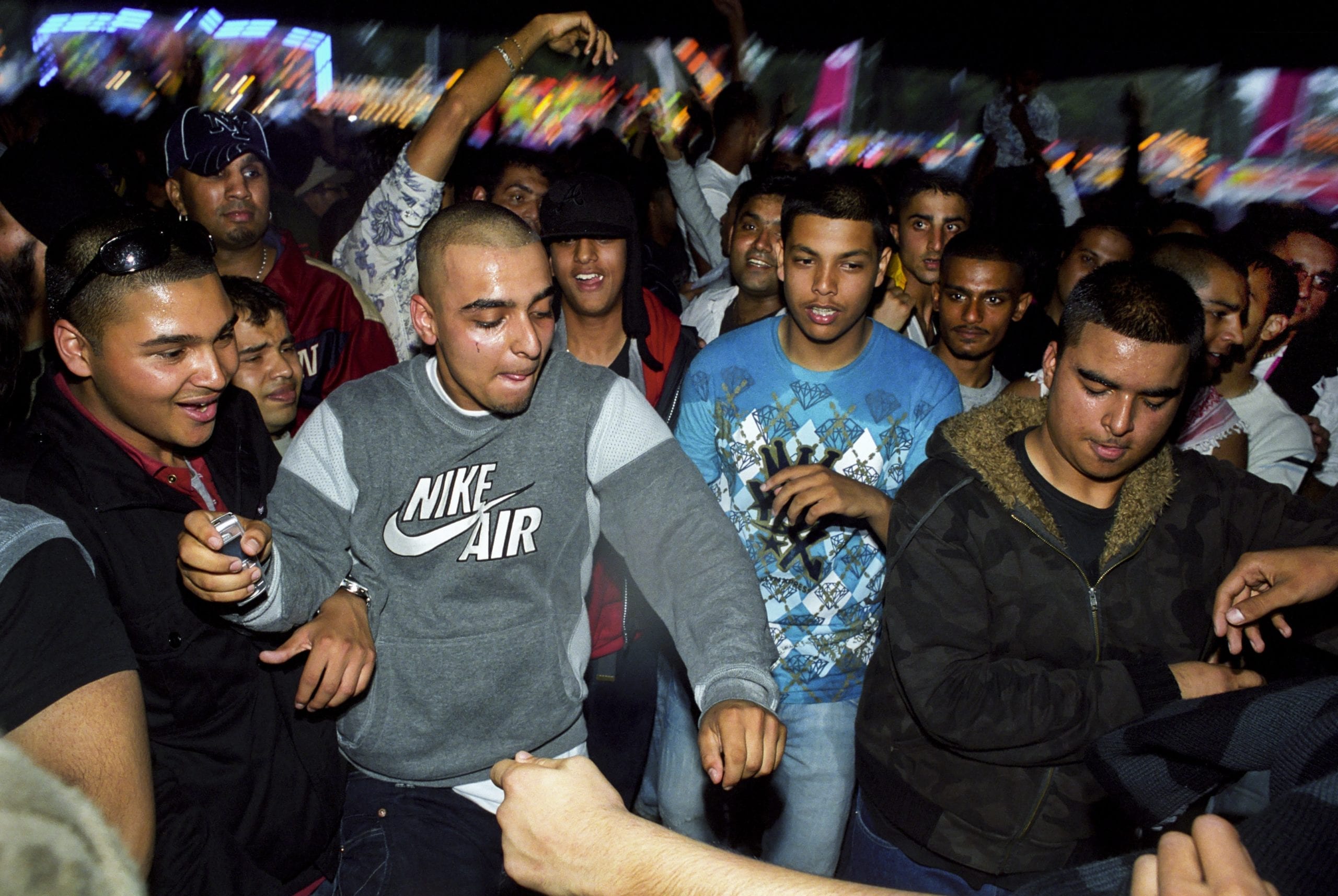
I was asked on a couple of occasions to do projects exposing the drug-fuelled days, but everyone does drugs! They’re a band, everybody knows, everybody around it is in exactly the same state so what’s the interest? Get over it.
For me, it was about how colourful and fun and crazy Primal Scream were. That enabled me to just be a part of the set up, it was like having your mate around who becomes part of the team. When you’re touring, it’s not glamorous, and it’s hard work, if you’re partying hard it starts to get very stretched, so I think I was around to pep people up as well.
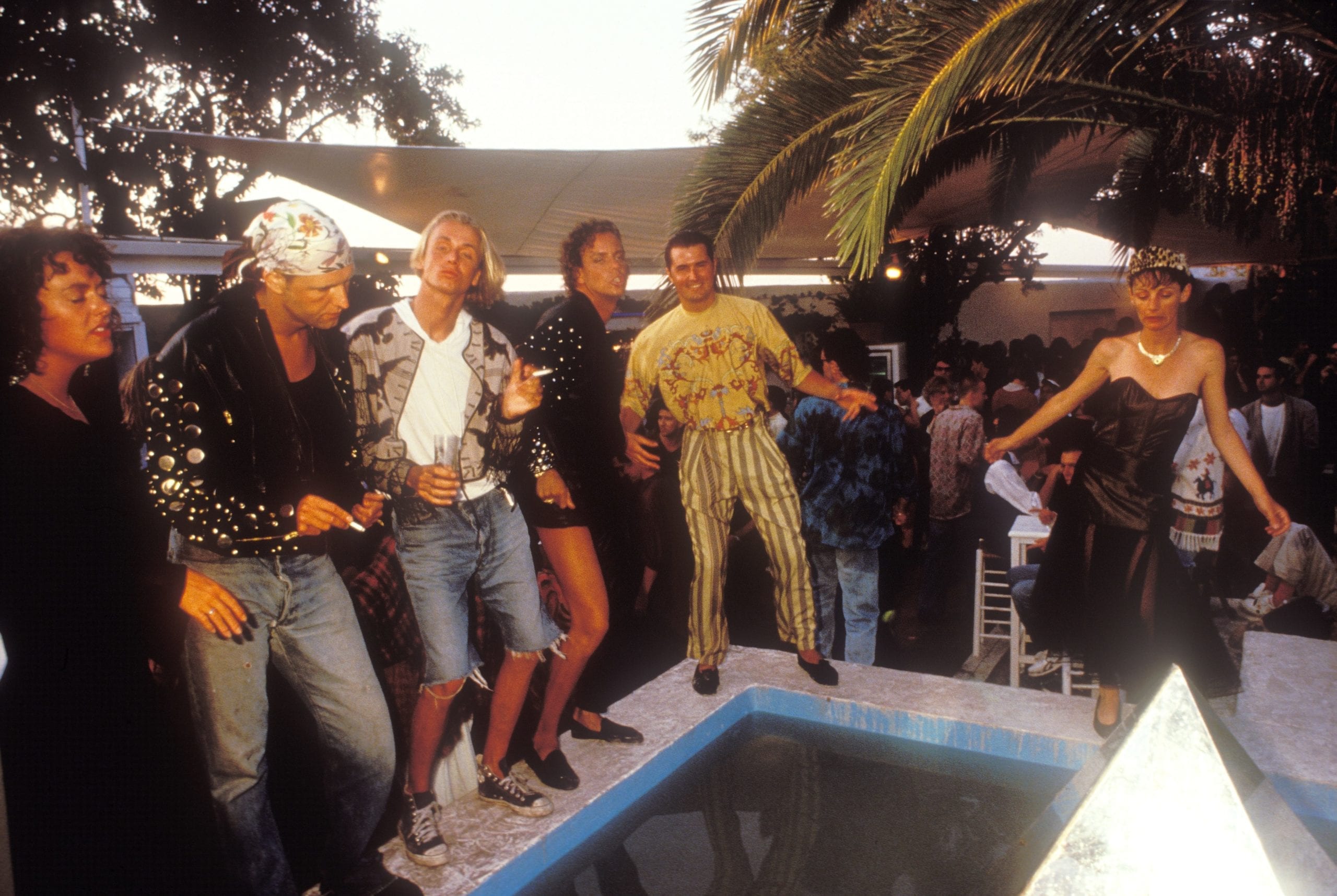
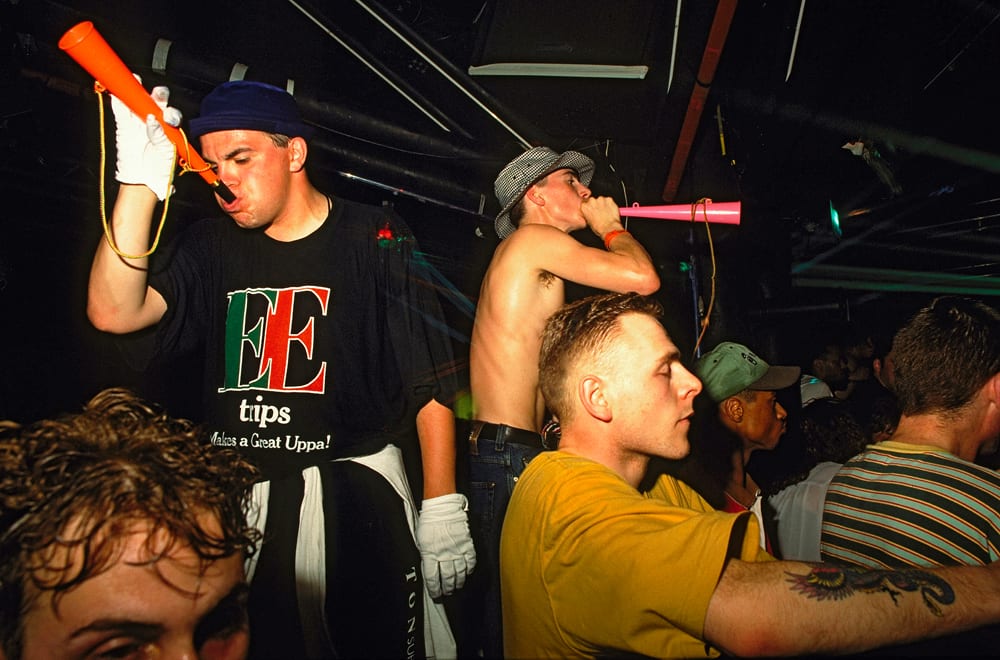
BJP: Dave, you come from a different perspective, you’re not following a single band around.
Dave Swindells: I came down to London thinking I’d be a photojournalist, and I got involved in clubs because my brother [Steve Swindells] was already running a gay/straight/polysexual night – I got started taking photos for i-D in 1985, doing their classic ‘straight ups’, and then a job came up for Nightlife Editor at Time Out. The whole acid house, balearic beat scene kicked off in the spring of 1988 – some people say it started earlier…
Grant Fleming: –It’s debatable..!
Dave Swindells: That’s true! But we can agree by the spring of ’88 it had gone overground. It was incredibly exciting, because as soon as you went to one of those events you knew how massive it was going to be, there was just the right chemical formula. Obviously ecstasy (!), but also the music and the people, regular people who looked more like they were going down to the chip shop than going out to a nightclub.
Grant Fleming: –Girls at the checkout counter going out raving that night!
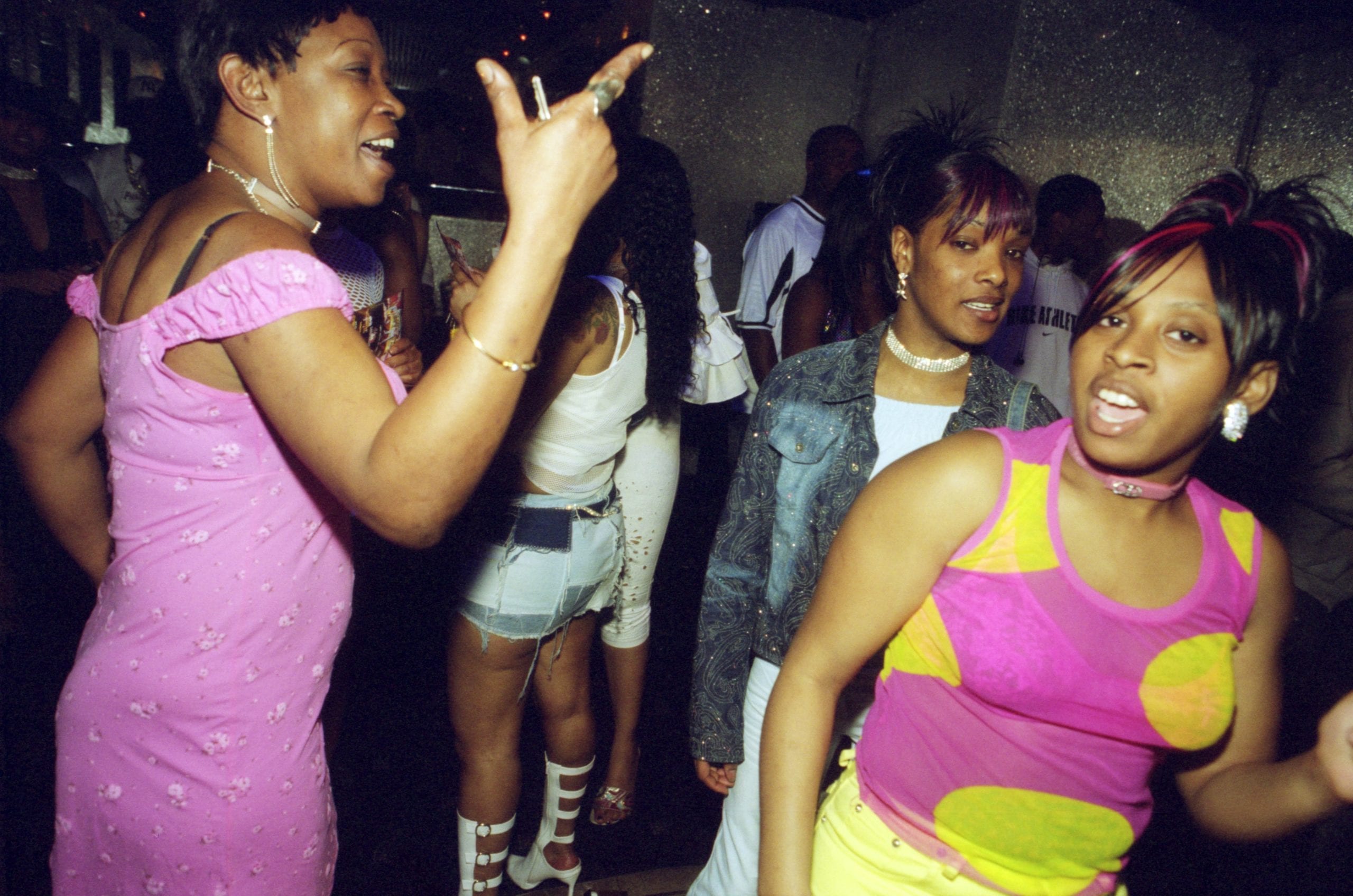
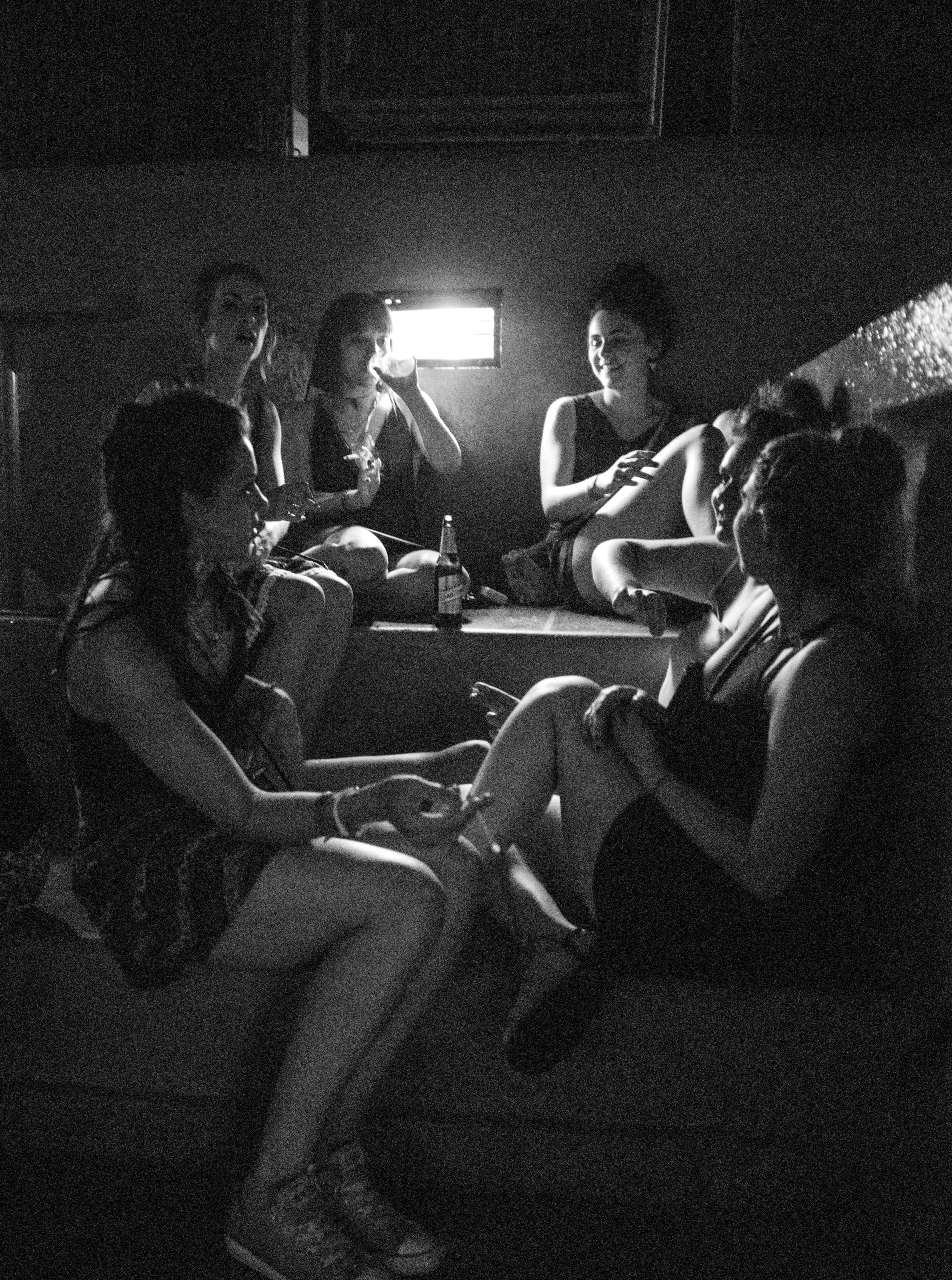
Dave Swindells: The great thing about the clubs I went to was that the people made the club. The DJ was important, but it was really the people who came who made it what it was. Everything’s changed now, everyone lines up and looks up at the DJ now and it becomes more of a performance. It’s turned around.
BJP: So when you went, you went to document – how does that differ?
Dave Swindells: Because I was either at i-D or Time Out, I had a different kind of way in. A certain degree of trust. Once I’d been doing it for a couple of years and knew Danny [Rampling] and others, I went and photographed at Heaven, because my brother was gay and I knew the head of security. Nobody else could photograph in Heaven apart from gay photographers, partly because they didn’t want an outsider, but also because it was owned by Virgin at the time! They didn’t want the publicity to be all about drugs in Richard Branson’s venture.
You’re a photographer, you’re dancing, taking pictures at the same time, you feel very much part of the scene. That’s why I carried on for 22 years – a camera is a passport to meeting people and if you don’t meet people then you’re not taking part in the event and you might as well not be doing the job. So if you’re still taking pictures you’re still involved. It would be sad, writing about it without having a connection to the people who go.
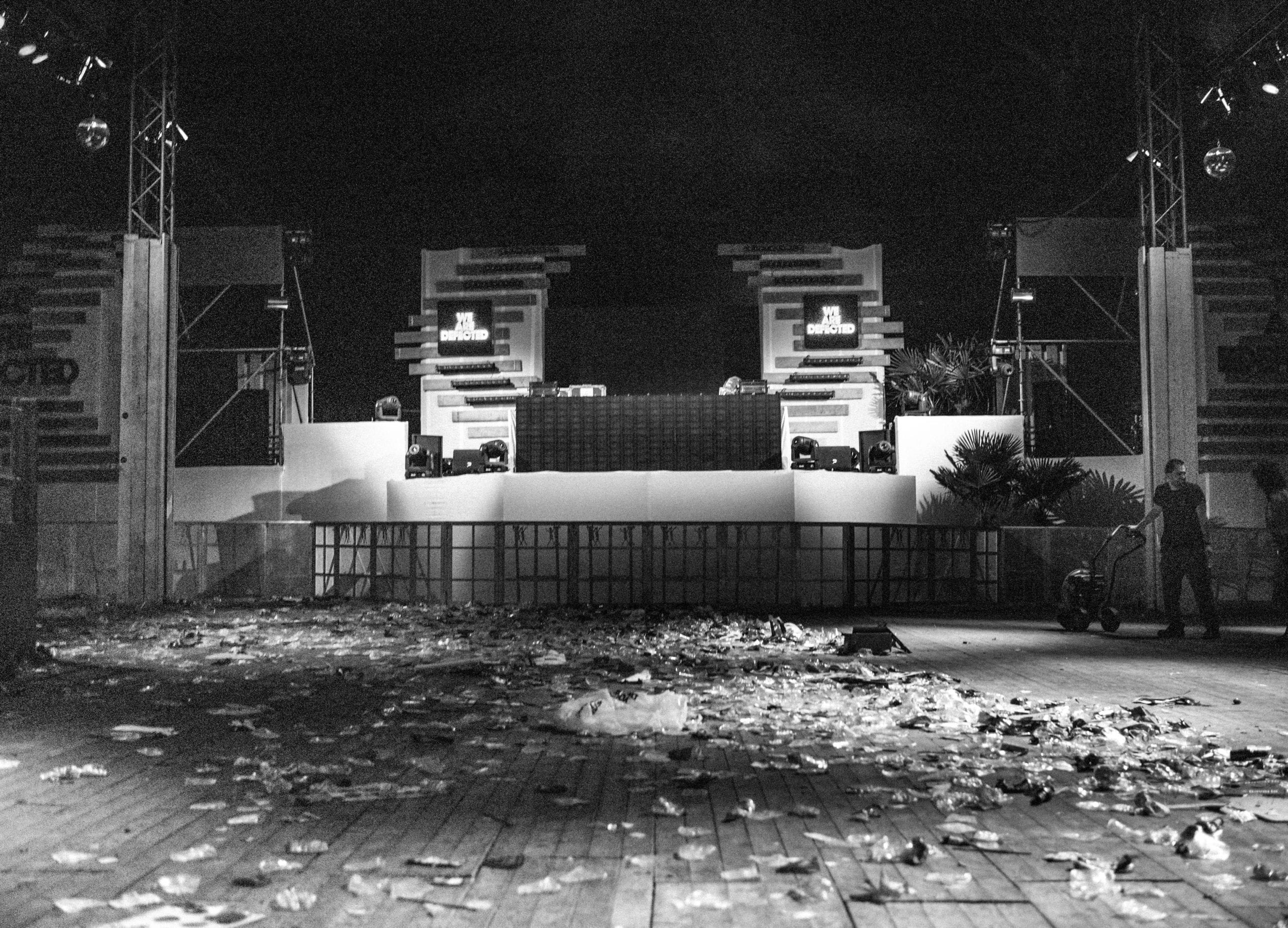
Additional contributing by Effie Price
The Lost in Music event is on Friday 4th December at Village Underground, 54 Holywell Lane, London EC2A 3PQ. Entry is free after 9pm, first come first served. More information here.
The exhibition continues: 4th – 17th February 2016 at theprintspace gallery, 74 Kingsland Rd, E28DL open 9am – 7pm daily. (Mon-Fri)

